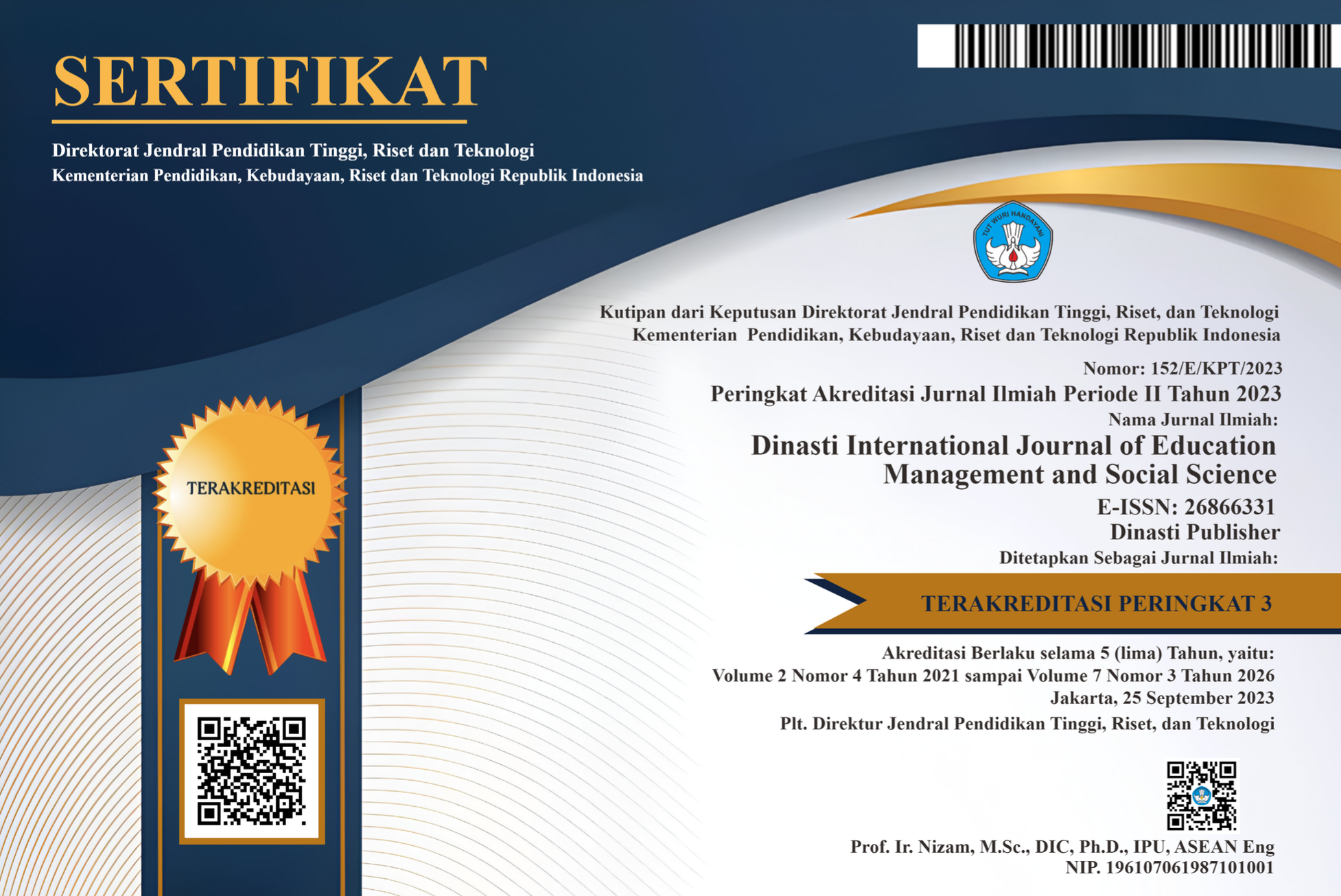The Influence Of Knowledge Management On Organizational Innovation Of Community Technical Implementation Units In Sijunjung And Sawahlunto Discipities
DOI:
https://doi.org/10.38035/dijemss.v6i1.3454Keywords:
Management Knowledge , Innovation organization , employee correctionalAbstract
Management knowledge is matter important related with context innovation in organization , especially in the Technical Implementation Unit , especially in the Regency Sijunjung and Sawahlunto which require constant adaptation and change . Formulation problem in study This is whether There is influence management knowledge to innovation organization of implementation units technical correctional facilities in the district Sijunjung and Sawahlunto ? This study aiming For give Contribution positive from study in understand How Management Knowledge to Innovation Correctional UPT Organization in the Regency Sijunjung and Sawahlunto , and provide alternative solution with give attention to justice organization use increase innovation in organization . Research methods This use study quantitative with non- probability sampling technique as many as 120 employees . Data collection techniques can be done use questionnaires distributed via google form. There are 22 questions that have gone through the measurement model test (outer model) and the structural model test (inner model) which were processed use SmartPLS SEM software assistance version 4. Research results show mark significant through the Path Coefficient ( Direct Effect) test of 0.000 <0.05, so that H0 and Ha are accepted which exist influence management knowledge to innovation organization . The results of the coefficient test Determination obtained The R Square value is 0.812, which indicates variable management knowledge give influence by 81.2% against innovation organization whereas the rest 18.8 % influenced other variables that are not explained in study This . From the results study This can drawn the conclusion that there is positive and significant relationship between management knowledge to innovation organization of Correctional Technical Implementation Unit in the Regency Sijunjung and SawahluntoReferences
Huang, J. W., & Li, Y. H. (2009). The mediating effect of knowledge management on social interaction and innovation performance. International Journal of Manpower , 30 (3), 285–301. https://doi.org/10.1108/01437720910956772
King, W.R., Keen, P., Qureshi, S., Kamal, M., & Keen, P. (2009). DigitalCommons @ UNO Faculty Books and Monographs Knowledge Management and Organizational Learning .
Shani, ABR, Sena, JA, & Olin, T. (2003). Knowledge management and new product development: A study of two companies. European Journal of Innovation Management , 6 (3), 137–149. https://doi.org/10.1108/14601060310486217
Vigoda-Gadot, E., Shoham, A., Schwabsky, N., & Ruvio, A. (2005). Innovation in the Public Sector, Report on the Public Surveys. International Public Management Journal , 8 , 57–81. internal-pdf://ipmj-4214054656/IPMJ.pdf%5Cninternal-pdf://ipmj-4214054656/IPMJ.pdf TS - RIS%5Cnhttp://survey.nifu.no/STEP/publin/reports/d17wp3survey.pdf %5Cnhttp://survey.nifu.no/STEP/publin/reports/d17wp3survey.pdf TS - RIS%5Cnhttp://doi.wiley.com/10.111
Wang, C.L., Ahmed, P.K., Wang, C.L., & Ahmed, P.K. (2006). The development and validation of the organizational innovativeness construct using confirmatory factor analysis . https://doi.org/10.1108/14601060410565056
Yang, J. (2012). Innovation capability and corporate growth: An empirical investigation in China. Journal of Engineering and Technology Management - JET-M , 29 (1), 34–46. https://doi.org/10.1016/j.jengtecman.2011.09.004.
Downloads
Published
How to Cite
Issue
Section
License
Copyright (c) 2024 Putri Amelia, Kusmiyanti Kusmiyanti

This work is licensed under a Creative Commons Attribution 4.0 International License.
Authors who publish their manuscripts in this journal agree to the following conditions:
- The copyright on each article belongs to the author(s).
- The author acknowledges that the Dinasti International Journal of Education Management and Social Science (DIJEMSS) has the right to be the first to publish with a Creative Commons Attribution 4.0 International license (Attribution 4.0 International (CC BY 4.0).
- Authors can submit articles separately, arrange for the non-exclusive distribution of manuscripts that have been published in this journal into other versions (e.g., sent to the author's institutional repository, publication into books, etc.), by acknowledging that the manuscript has been published for the first time in the Dinasti International Journal of Education Management and Social Science (DIJEMSS).















































